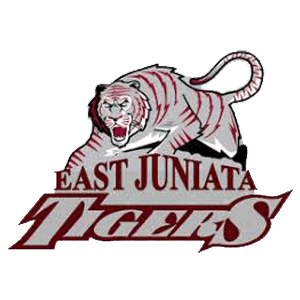1. Educate Athletes, Coaches, and Staff on health and safety protocols. Anyone who is sick MUST stay home. Constant Reminder to students and staff. If sick STAY HOME!!!!!
2. Everyone MUST go through a verbal or written screening (could include taking temperature-anything above 100.4 should be sent home) prior to any practice, event, workout, team meeting, etc. to check for signs of COVID. This will be performed by the coaches. Use the COVID-19 Screen Forms provided by the school. 1.) make sure it is dated, will also be used for contact tracing if needed 2.) make sure you have a valid phone number for each athlete. 3.) If (+) for any symptom, close contact, or fever (100.4 or higher), student must immediately be sent home and Aaron or Anita must be contacted immediately
3. Promote healthy hygiene practices such as hand washing (20 seconds with warm water and soap) and employees wearing a cloth face covering as feasible. (Face coverings are recommended to help decrease potential exposure to COVID-19 Face Coverings will not be used for athletes while practicing or competing.) Hand Sanitizer will be available for team use as resources allow. PPE (gloves, masks, eye protection) will be used as needed and situations warrant.
4. Encourage social distancing through increased spacing, small groups, and limited mixing between groups, do the best you can.
5. Inside - No use of Locker room (no showers), except for one uni-sex bathroom in gym lobby. Entrances to the gym lobby and gym will be limited to one doorway. No roaming the hallways inside. Stay in the designated area.
6. Athletes will take ALL of their equipment home daily and have it washed before returning to practice, open gyms, etc.
7. EVERYONE (Students/Coaches) MUST bring their own water bottle already filled. No Use of water fountains. If they drink a lot….bring a lot!!!
8. Equipment uses at practices, open gyms, etc., must be disinfected after each session by the Coaches.Maintenance will supply sprays/wipes for equipment. Maintenance will be responsible for cleaning facilities overnight. Weights must be disinfected after each use.
9. No Handshakes, celebrations, high fives, fist/elbow bumps, chest bumps, hugging, etc. Provide continual reminders of ways to limit exposure to COVID-19 (hand washing, coughing in your elbow, disinfecting touched surfaces, social distancing, avoid touching eyes, nose, face and mouth, no spitting, gum chewing, etc.)
10. Student Athletes should remain with their assigned groups during each workout and during daily workouts to limit the number of people they come in contact with.
2
11. Identify Staff and students who may be at a higher risk of severe illness from COVID-19 due to underlying medical conditions.
12. Think Big Picture. Progression into workouts. Slowly get your players back into the groove. Athletes may be deconditioned more than normal, so start slow, monitor students who may be struggling as they return to activity. Extra care if the temperature outside/inside are high or high humidity.
13. PRACTICES ARE VOLUNTARY UNTIL AUGUST 17th Be lenient on attendance! Don’t make students feel they will jeopardize future playing time if they don’t attend open gym/practice/game if they are not feeling well.
CLASSIFICATION OF SPORTS
High Risk: Sports that involve close, sustained contact between participants, lack of significant protective barriers, and high probability that respiratory particles will be transmitted between participants. Examples: football, wrestling, cheerleading (stunts)
Moderate Risk: Sports that involve close, sustained contact, but with protective equipment in place that may reduce the likelihood of respiratory particle transmission between participants OR intermittent close contact OR group sports that use equipment that can’t be cleaned between participants. Examples: basketball, volleyball, baseball, softball, soccer, ice hockey, tennis, pole vault, high jump, long jump, 7 on 7 football
Low Risk: Sports that can be done with social distancing or individually with no sharing of equipment or the ability to clean the equipment between uses by competitors. Examples: running events, cross country, throwing events, swimming, golf, weightlifting, sideline cheer
** High/Moderate Risk Sports may move to a Low risk category with non-contact modifications. Team Activities should be limited to individual skill development drills that maintain social distancing.
LEVELS OF PARTICIPATION Level 1 (PAState Red)
Team Activities: No In-person gatherings allowed, Athletes and Coaches may communicate via online meetings (zoom, google meet, etc.), Athletes may participate in individual home workouts including strength and conditioning.
Level 2 (PA State Yellow or Green)
Team Activities may include: team meetings, open gym, kick around, weight training/conditioning, running events, cross country, throwing events, swimming, golf, and sideline cheer, etc.
Limitations on Gatherings:
● No gathering of more than (25 Yellow - 250 Green) individuals per group including coaches per practice area.
● Controlled non-contact practices only, modified game rules PhysicalActivity:
● Lower risk sports practices may begin
3
● Modified practices may begin for Moderate and High risk sports (practices must remain non-contact and include social distancing where applicable, activity should focus on individual skill development)
Level 3 (PA State Green)
Team activities may include: basketball, volleyball, baseball, softball, soccer, ice hockey, tennis, pole vault, high jump, long jump, 7 on 7 football, etc.
Physical Activity and Athletic Equipment:
● Low, Moderate, and High Risk practices and Low and Moderate Risk competitions may begin (As per State, Local, and PIAA Guidelines)
Level 4 (PA State Green)
Team Activities include: Low/Moderate Sports may resume. High Risk Sports (Football, Wrestling, and Cheerleading Stunting) may begin full person to person contact and competition.
Physical Activity and Athletic Equipment:
● All sports may resume normal practice and competition
